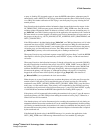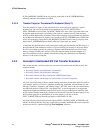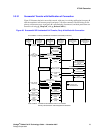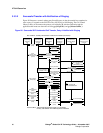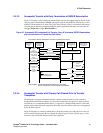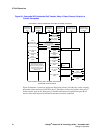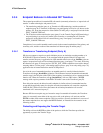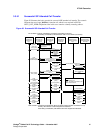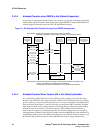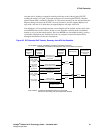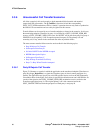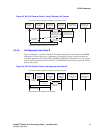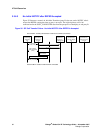Dialogic
®
Global Call IP Technology Guide — November 2007 85
Dialogic Corporation
IP Call Scenarios
To protect the Transfer Target, the Transferor simply reverses the primary and secondary call CRNs
when calling gc_InvokeXfer( ) to reverse the roles of the two remote parties. The original Transfer
Target will now send INVITE to the original Transferee, so that the Transferee is effectively “called
back” by the Transfer Target. This has the advantage of hiding information about the original
Transfer Target from the original transferee, although the Transferee’s experience in this scenario
will be different that in current systems PBX or Centrex systems.
To expose the Transfer Target and provide an experience similar to current PBX and Centrex
systems, the Transferor uses the secondary call to alert the Transfer Target to the impending
transfer, but then disconnects the secondary call and completes the transfer as an unattended
transfer. In this case, the gc_InvokeXfer( ) call only includes the CRN of the primary call.
3.3.4.2 Transferee or Transferred Endpoint (Party B)
This endpoint behaves in the same manner as in unattended transfer with one exception: the
INVITE that is sent from Party B to Party C for the transferred call contains a Replaces header that
is obtained from the replace parameter in the Refer-To header of the REFER from Party A.
Note that the primary call cannot be disconnected prior to making the transferred call during an
attended transfer because the primary call database contains the Replaces information that is
required to establish the transferred call.
3.3.4.3 Transfer Target or Transferred-To Endpoint (Party C)
This endpoint behaves in much the same manner as in an unattended transfer with one additional
feature and one additional responsibility.
If the Replaces header exists in the incoming INVITE, Global Call automatically matches the
Replaces value with any existing connected call on Party C. If a matching call (the secondary or
consultation call) is found, that call’s CRNs is passed to the application as a
GCPARM_SECONDARYCALL_CRN parameter in the GC_PARM_BLK that is attached to the
GCEV_OFFERED event.
The party C application must also drop the secondary/consultation call when the transfer
completes. Unlike H.450.2 call transfer, Global Call does not automatically disconnect the
secondary call once the transferred call answered at the party C.



